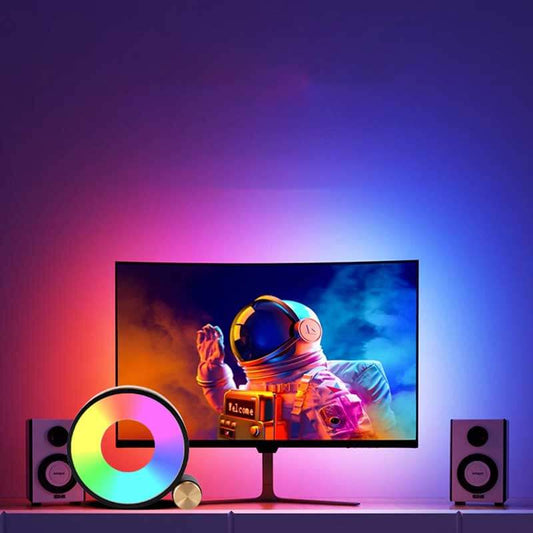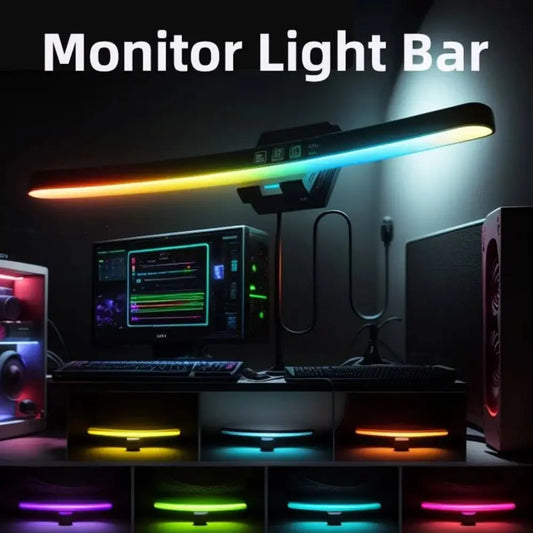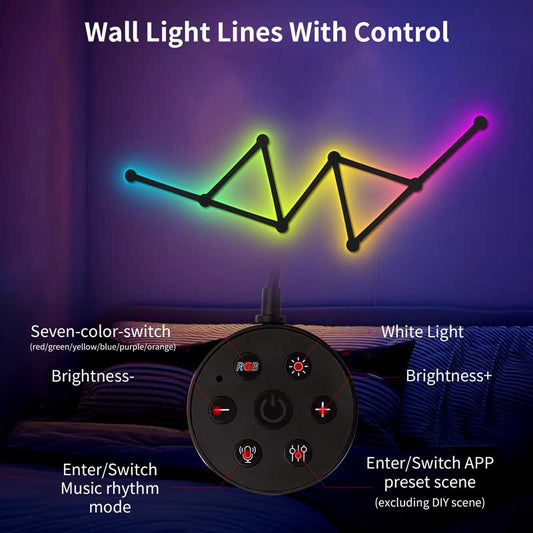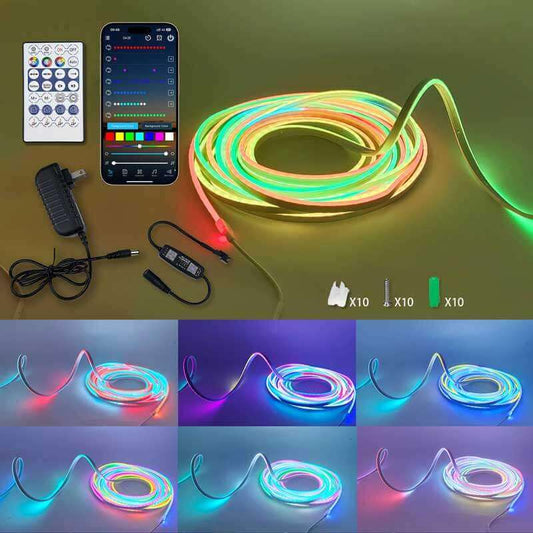Which color mode is best for gaming?
Share
The best color mode for gaming depends on the type of game you're playing and the atmosphere you want to create, as well as how the colors affect your comfort and performance. There are several color modes you can experiment with, each designed to suit different gaming experiences. Here’s a breakdown of common color modes and when to use them:
1. RGB Mode (Full Spectrum Colors)
- Best For: Immersive, aesthetic gaming experiences, action games, and multiplayer.
- Why it’s good: RGB lighting gives you a full range of colors, allowing you to create an immersive atmosphere that changes with the game’s mood and visuals. RGB lights can be used to reflect in-game actions, like flashing colors when you take damage or transitioning hues based on the environment (e.g., red for combat, blue for exploration). It’s great for games where you want to immerse yourself in a dynamic, colorful environment.
2. Blue Light Mode
- Best For: Focused, strategy-based games (e.g., RTS, puzzle, or simulation games).
-
Why it’s good: Blue is associated with calmness, focus, and clarity, making it ideal for games where concentration is key. It can help you maintain mental sharpness during long gaming sessions. Blue light is known to reduce eye strain and keep you feeling more alert without feeling overwhelmed.
- Considerations: Blue light, if overused, can strain your eyes over long periods, so it’s best used in moderation or paired with eye care measures like blue light filters.
3. Red Light Mode
- Best For: High-intensity, fast-paced games (e.g., FPS, racing games, action games).
-
Why it’s good: Red lighting is energetic and intense, which can heighten the excitement during adrenaline-pumping gameplay. Red is often linked to urgency and can create a more intense, action-packed atmosphere, making it a popular choice for competitive gaming or games with fast reflexes.
- Considerations: While red can enhance intensity, too much red can cause eye fatigue over time. It’s best used for short, high-stakes gaming sessions.
4. Dark Mode / Low-Light Mode
- Best For: Long gaming sessions, role-playing games (RPGs), or adventure games.
-
Why it’s good: Using dark, low-light settings with dim blue or purple hues can create a moody, atmospheric environment. This is ideal for games with immersive worlds where you want to reduce distractions and focus on the game. The low-light setup also reduces eye strain and helps maintain your energy levels during marathon sessions.
- Considerations: Make sure there is some ambient light to prevent eye fatigue. A well-lit room with dark backlighting (like LED strips behind your monitor) is ideal for this effect.
5. Green Light Mode
- Best For: Relaxing, less intense gaming, or games with nature or exploration themes.
-
Why it’s good: Green is associated with balance, nature, and calmness. It can provide a more relaxing, grounding atmosphere, making it great for games that are more chill or slower-paced, like simulation games, RPGs, or open-world exploration games.
- Considerations: Green lighting is less harsh than blue or red and works well for reducing eye strain during longer sessions.
6. Yellow/Amber Light Mode
- Best For: Casual or social gaming, puzzle games, or games with lighthearted themes.
-
Why it’s good: Yellow is associated with positivity, alertness, and energy, which can make it a good choice for casual or social gaming sessions. It’s not too harsh on the eyes and can help boost mood and focus, making it great for lighthearted or casual gaming experiences.
- Considerations: Yellow lighting should be used sparingly for long gaming sessions, as it can cause fatigue after prolonged exposure.
7. White Light Mode
- Best For: Everyday gaming, games with balanced themes, and clarity-focused tasks.
-
Why it’s good: White is neutral and versatile, providing clear, non-distracting light. It can help you stay focused and alert without overwhelming you. White light works well when you’re playing more neutral or varied games, like simulation games, sports games, or general-purpose gaming.
- Considerations: White light can feel harsh in darker rooms, so it’s best paired with adjustable dimming settings or ambient lighting.
8. Purple Light Mode
- Best For: Fantasy games, RPGs, and games where you want a creative and immersive atmosphere.
-
Why it’s good: Purple is a mix of red and blue, and it has both calming and stimulating qualities. It’s great for creating an immersive and magical atmosphere, making it ideal for fantasy, RPGs, and adventure games. It also helps with creativity and can set the mood for imaginative, story-driven games.
- Considerations: Purple lighting is less intense than red but still adds excitement, making it a good middle ground for immersive gaming.
Which Color Mode Should You Use?
- For High-Action Games (FPS, racing, battle royales): Red lighting can heighten intensity, but you can also use RGB mode to make it dynamic.
- For Strategy or Focused Games (RTS, puzzle games, simulations): Blue or green is best for maintaining concentration and reducing eye strain.
- For Immersive, Role-Playing Games (RPGs, adventure games): Dark, blue, or purple lighting can help set the mood and enhance the atmosphere.
- For Relaxing Games or Casual Play (simulation, platformers): Green, yellow, or amber can create a more relaxed and positive environment.
YOUWEI TRADE Conclusion:
The best color mode for gaming really depends on what you’re playing and how you want to feel. For high-energy, action-packed gameplay, red and RGB modes are great for excitement, while blue and green are better for focus and calmness. If you're playing immersive or story-driven games, you might prefer purple or dark lighting to enhance the atmosphere. Experimenting with these different modes can help you tailor your gaming environment for both comfort and optimal performance!




